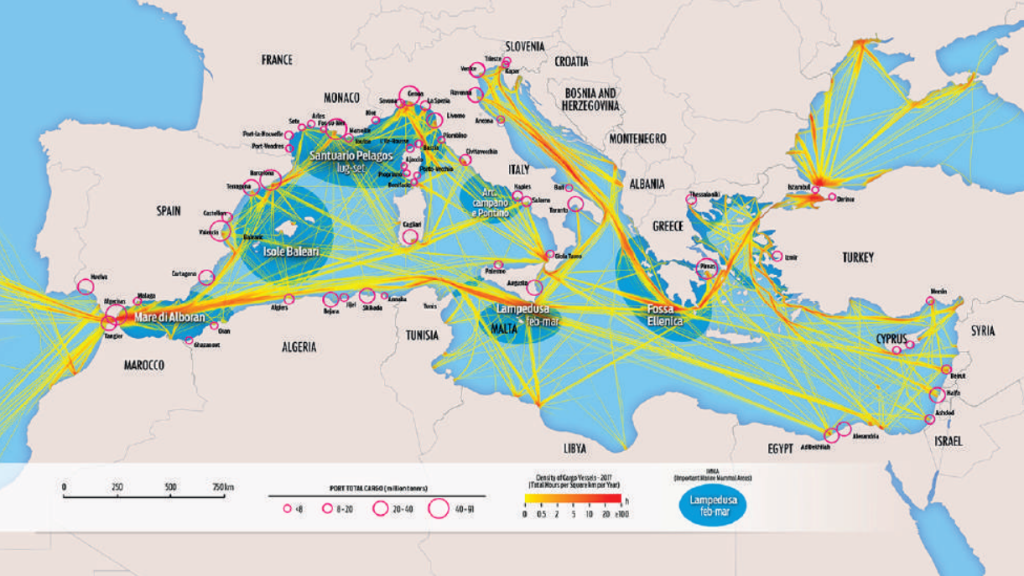The World Sustainability Foundation (WSF) has presented the results of a major study on the issue of ship-whale collisions.
The study, conducted by biologist Federica Azzali and supported by Italian Shipping & Logistics Agency S.r.l. (ISLA), reveals a troubling picture: each year, an estimated thousands to tens of thousands of collisions occur between ships and whales. These collisions not only endanger the lives of cetaceans, but can also cause significant damage to vessels and pose a danger to the crew. The problem is getting worse as shipping traffic increases, WSF highlights.
Among the species most affected are those already threatened with extinction: minke whales, sperm whales, blue whales, and right whales. Dr. Azzali explains, “These magnificent creatures, already challenged by hunting in the past, now face a new threat. Collisions with ships are becoming a significant factor hindering their recovery.”
The study identified Important Marine Mammals Areas (IMMAs) as focal points for cetacean protection. These areas, which include breeding, feeding and migration grounds, often overlap with high-traffic shipping lanes, increasing the risk of collisions.
Furthermore, a key element of the study is a detailed map illustrating the overlap between the busiest shipping lanes and IMMAs in the Mediterranean Sea. “This map is a key tool,” says Dr. Azzali. “It allows us to clearly visualize the areas of highest risk and plan targeted interventions to protect cetaceans.”

One alarming aspect that emerged from the research is the lack of public awareness of this problem. A survey conducted as part of the study revealed that at least 50 percent of the public was unaware of this issue. “Raising awareness is critical,” says Paolo Bray, Founder and Director of the World Sustainability Foundation. “Only through widespread understanding of the problem can we hope to mobilize the resources and support needed to implement effective solutions.”
Key solutions
According to the report, raising awareness of this issue is crucial to reducing the phenomenon. Many do not yet know about the possibility of collisions between cetaceans and ships. This is a problem that cannot be avoided, and for this reason, the report suggests the following:
- During the day, it is important to have an observer to check for cetaceans on the track line, inform and alert the captain, and avoid injuring the animal. If the use of an observer is difficult, you can opt for automated systems that detect cetaceans through acoustic methods.
- The routing of ships (i.e., traffic separation systems) can be particularly useful in reducing the phenomenon.
- Impose slow-down measures in areas most frequented by whales.
- Install infrared cameras on ships to automatically alert the harbor master to the presence of cetaceans.
- Find and test instruments to share real-time observations of cetaceans, creating a word-of-mouth system between ships and port authorities to slow down in time.
- The “Friend of the Sea” certification is a sustainable navigation standard aimed at improving the marine industry’s use of resources. It includes the “Save the Whales” campaign, which rewards maritime operators who implement measures to prevent whale collisions.
The World Sustainability Foundation calls on maritime authorities, shipping companies and the public to take note of these findings and work together to implement effective solutions. Protecting these marine species is not only a matter of biodiversity conservation, but also of maritime safety and global responsibility.
ISLA was very pleased to support the study because, as a company involved in the maritime industry, we feel it is our responsibility to help protect the oceans. We live from the sea and understand the need to preserve it for future generations.
… concluded Pietro Coniglio, Managing Director, ISLA.

































































